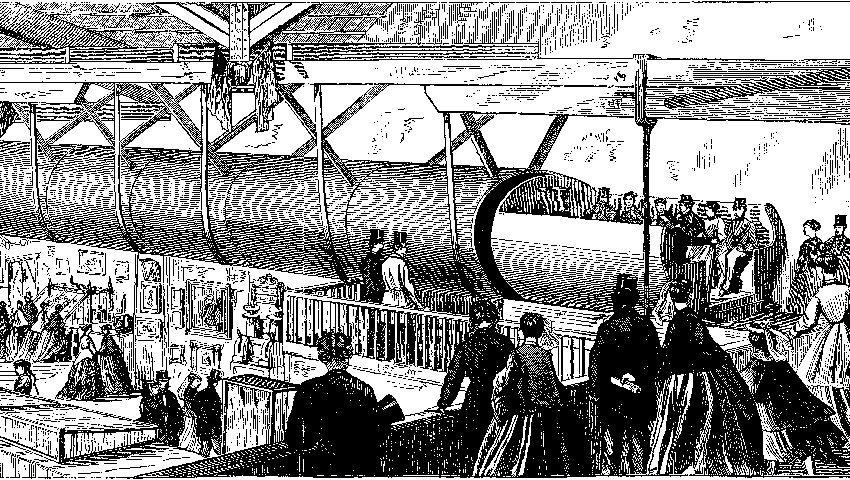
Predictions that missed the mark
You’ve probably heard of Lord Kelvin. But, in case you haven’t, he was a distinguished British mathematician and physicist, who – in 1890 - was also president of the British Royal Society. So, no dimwit then. Yet, in 1895, he declared, authoritatively, that "heavier-than-air flying machines are impossible."
And Lord K. was far from the only clever clogs to make a pigs-ear of their predictions. In 1932, for instance, Albert Einstein himself predicted that “nuclear energy will never be obtainable”, while – in 1959 – the then president of IBM was pretty sure of himself when he refused to invest in photocopying technology because “the world market for copying machines is 5000 at most.” And we could list lots more examples. Which just goes to prove - if you didn’t know it already - that being bright doesn’t always make you right.
But it made us, here at Desperateseller.co.uk, think. Who has foretold what about the automotive market, and how right were they? And, as you might expect, we found lots of famous prognostications, from lots of famous people, all varying in their accuracy. We thought it would be fund to pick a few and share them with you. So, if you’re sitting comfortably. . .
It would be easy, of course, to focus on the obvious, such as the many prophecies of the flying car, which has been predicted by everyone from Leonardo da Vinci to Henry Ford, and of which you may be – understandably – bored. But we won’t. Instead, we’re going to look at five of the lesser-known soothsayers, who had somewhat more left-field ideas of the future. And there’s no shortage of these.
Take, for example, Alfred Sloan. As the Chairman of General Motors during World War II, few contested his credentials when it came to knowing the likely direction of the automotive market. After all, that was his job. So when, in 1943, he conjectured that cars could ultimately be made of plywood, making them extremely fuel-efficient, he was taken seriously. The idea, however, was ditched forever, after wooden gliders were used in the D-Day invasion, earning them the nickname “flying coffins.”
But wooden cars sounds a fairly sober prediction compared with that made, a few years later, by the Board of the Ford Motor Company. Because, in 1958, they were so sure that cars would soon be nuclear powered, that they made a concept vehicle known as the Ford Nucleon. It was proposed that each car would have its own nuclear reactor, which would be replaced every 5,000 miles at recharging stations. Instead of filling up at the pump, your reactor would be swapped with a new one, with different options available, depending on your model. However, as we know, the idea didn’t progress, for reasons which were not revealed - though it’s not too difficult to guess at what they might have been. Imagine 40 million nuclear reactors on the UK roads alone!
Not that all crazy calls about the automotive world have been about cars. Some have been about the infrastructure that carries them. The replacement of roads by tubes, for example, has been an enduring favourite. Such a transformation was first predicted in 1957 by James Binger, who became president of Honeywell Aerospace, and who was convinced that roads would give way to a system of pipelines that would use air pressure to transfer cars from one place to another. This system (called ‘pneumatic dispatch’) had been successful for letters and small parcels since 1860, and Binger saw no reason why it shouldn’t work with cars. The idea died, of course, but was resurrected in 2012 by Elon Musk, who proposed the ‘Hyperloop’ a system which uses tubes to transport passengers up to 760 mph. More recently, in May 2019, a NASA scientist patented a ‘vacuum tube transport system’, which is described as ‘a capsule body to transport passengers within a vacuum tube’.”
But before tubes, came elevated highways. As long ago as 1925, the renowned American architect, Harvey Wiley Corbett, responded to the rapidly-growing congestion problems in many cities by predicting a vast and complex system of elevated highways. According to Corbett, future city streets would be in four levels: the top level for pedestrians the next for slow motor traffic the next for faster traffic, and the lowest for electric trains. And the plan attracted lots of serious interest – in fact, a version of it almost caught on in the UK, especially in Derby, in 1963, when planners proposed an ‘elevated carriageway that will allow traffic to circulate with convenience, while permitting continuous pedestrian flow underneath.’ Fifty seven years later, Derby residents are still waiting.
Finally, we thought we’d sign off with a prediction from 1942. This was a time when anything that made you feel even the tiniest bit better about life must have been welcome, so it’s probably understandable that the suggestion – by a leading Ford designer – that cars would soon feature plastic roofs that allowed passengers to get a good tan, but without the discomfort of sunburn, was received enthusiastically. “The roof will eliminate sunburn by filtering out the infra-red rays,” he said, “while a lightweight venetian blind will allow control of light levels.” Sadly, this soothsayer was, like most people of the time, unaware that it’s ultraviolet rays, not infrared, that not only causes sunburn, but is also responsible for cancer. Luckily, the idea went no further.
Talking of predictions, one thing we can say for sure – if you’re looking for a fantastic-value used motor, you’ll find a great choice on the Desperateseller.co.uk used cars section. Whatever your tastes, from a Nissan Micra to a Mercedes Benz E Class, you’ll find something to meet your needs.













